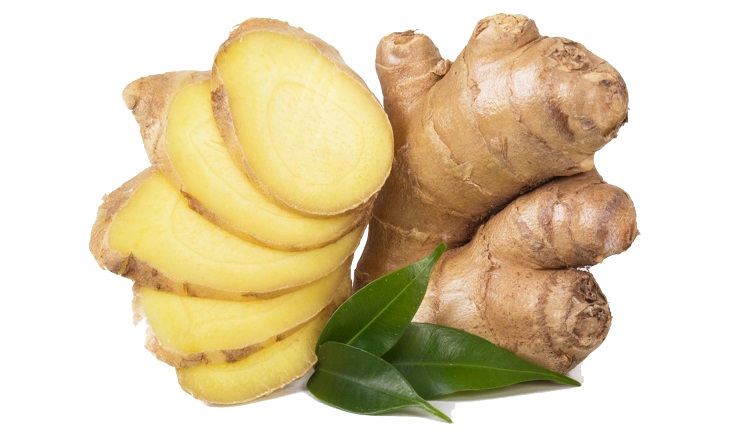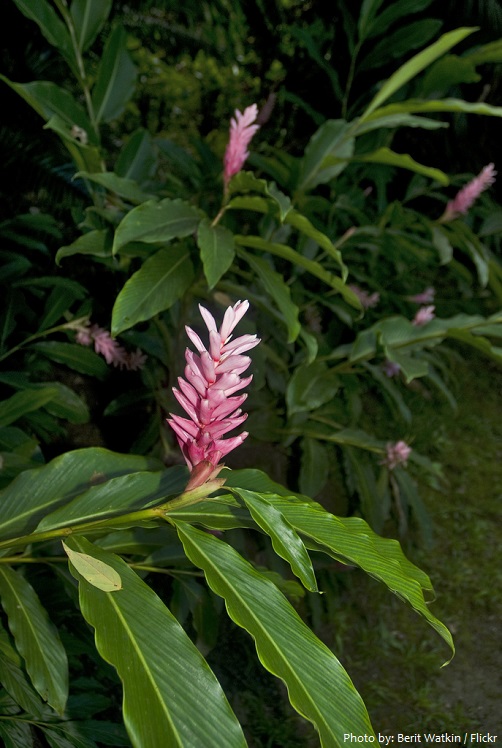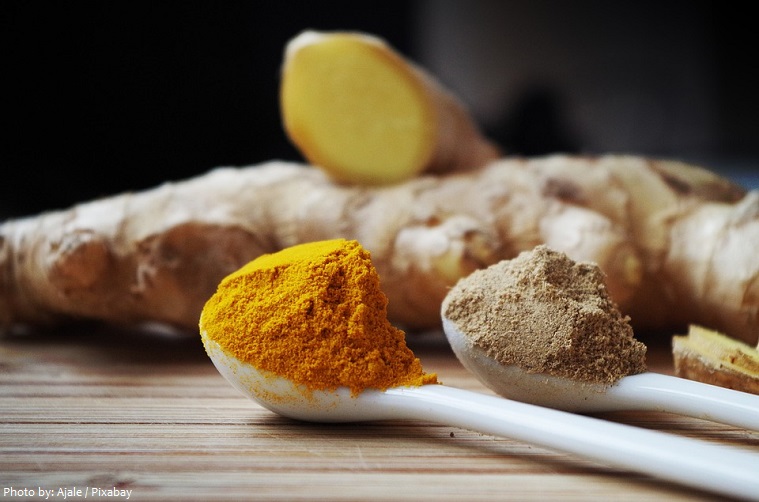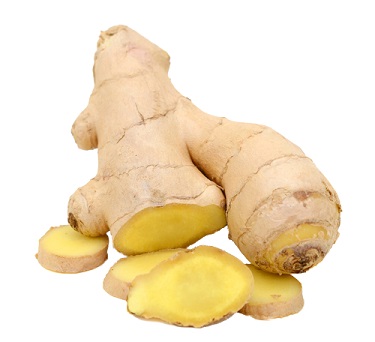
Ginger (Zingiber officinale) is a flowering plant whose rhizome, ginger root or simply ginger, is widely used as a spice or a folk medicine.
Ginger originated in the tropical rain forests from the Indian subcontinent to Southern Asia.
It is now cultivated in the U.S. (including Hawaii), India, China, the West Indies, and other tropical regions.
Ginger is one of the world’s more well-known and useful plants, being used for centuries as a spice for flavoring food and as a medicinal plant.
Chinese and Ayurvedic practitioners have relied on ginger for at least 3,000 years for its anti-inflammatory properties, and have used it as a “carrier” herb, one that enables other herbs to be more effective in the body.

As one of the first spices exported from the Orient, ginger arrived in Europe during the spice trade, and was used by ancient Greeks and Romans.
By the 11th century, it was a common trade article from the East to Europe.
The Spaniards brought it to the West Indies and Mexico soon after the conquest, and by 1547 ginger was being exported from Santiago to Spain.
Jamaicans and early American settlers made beer from it; and today, natural ginger ales made with fresh ginger are available as a digestive tonic.
Ginger is a perennial reed-like plant with annual leafy stems, about 3 to 4 feet tall. It produces clusters of white and pink flower buds that bloom into yellow flowers. Because of its aesthetic appeal and the adaptation of the plant to warm climates, it is often used as landscaping around subtropical homes.

The flesh of the ginger rhizome can be yellow, white or red in color, depending upon the variety. It is covered with a brownish skin that may either be thick or thin, depending upon whether the plant was harvested when it was mature or young.
There are 80 calories in 3.5 ounces of Ginger.
Ginger contains a diverse array of many important vitamins and minerals. It also contains gingerol, a compound with potent antioxidant and anti-inflammatory properties that has been linked to many unique health benefits.
The health benefits of ginger include reduce hypertension, inflammation, DNA breakage, nausea, migraines, and amyloid beta build-up, which is involved in Alzheimer’s disease. Ginger may also reduce DNA damage from radiation and provide some protection from industrial pollutants.
Ginger has a sharp, pungent taste and aroma.

Ginger rhizomes are often pickled in vinegar or sherry as a snack or cooked as an ingredient in many dishes. They can be steeped in boiling water to make ginger herb tea, to which honey may be added. Ginger can be made into candy or ginger wine.
The spice has a slightly biting taste and is used, usually dried and ground, to flavor breads, sauces, curry dishes, confections, pickles, ginger ale and ginger beer.

Its generic name “Zingiber” is derived from the Greek zingiberis, which comes from the Sanskrit name of the spice, singabera.
In Japan and elsewhere, slices of ginger are eaten between dishes or courses to clear the palate.
In Burma, ginger is used in a salad dish called gyin-tho, which consists of shredded ginger preserved in oil, and a variety of nuts and seeds.
In China, sliced or whole ginger root is often paired with savory dishes, such as fish.
The oil of ginger may be used for perfume and medicine.
Source: JustFunFacts
Ahhhhh Ginger. Great for the tummy and I love the plants!!!!
LikeLiked by 1 person
I am adding a short daily prayer to the board. I would invite each of you, if you wish, to also add one or maybe two of your own liking. I do not want to stifle anyone but please limit yourself to one or two religious postings. here’s one I found that I liked.

LikeLike
LikeLike
LikeLike
Good night
LikeLiked by 1 person
Night Filly!
LikeLiked by 1 person
LikeLike
LikeLike
LikeLike
LikeLike
LikeLike
Good Night Everyone!
LikeLike
LikeLiked by 1 person
this SHOULD be blasted everywhere! but big pharma controls media.
disgusting
LikeLike
LikeLiked by 1 person
LikeLiked by 1 person
I can only imagine!!!!
LOL
LikeLike
You have to be careful with hippos
LikeLiked by 1 person
oh my!
NO!!!!!
crowds freak me out…this? i couldn’t even contemplate this!!!!
LikeLike
LikeLiked by 1 person
she’s absolutely right!
LikeLike
LikeLiked by 1 person
I see he’s in the “insert foot” part of the process
LikeLike
LikeLiked by 1 person
LOL
LikeLike
LikeLiked by 1 person
i liked her assessment of kevin…we’ll see
LikeLike